Brett’s well and back living in the moment
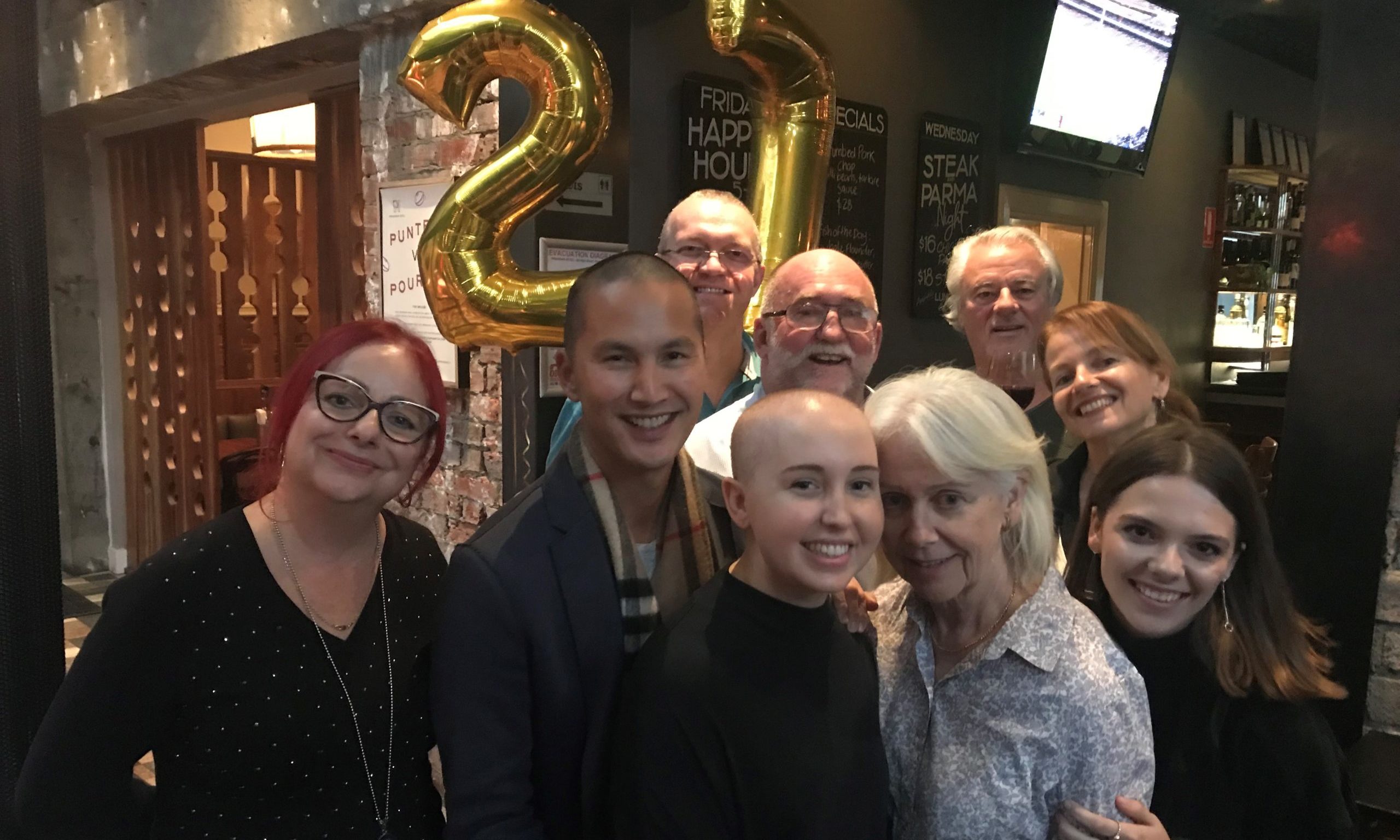
Before she got sick in 2018, Brett Conley was “living a really great life” with “a great job, great friends, a great new boyfriend, and a great family”.
After completing her chartered accountancy studies and working in corporate banking at ANZ in hometown Brisbane, she had moved roles with her employer to Melbourne early the previous year.
“It was a really exciting time,” said Brett.
She was establishing a new friendship group, had been dating Ken Nguyen for six months, and had been promoted to a manager role at work.
Only a month later, on Valentine’s Day 2018, everything in Brett’s life changed when she was diagnosed with ALL, aged 26.
That day she found out the symptoms that had plagued her for several weeks were signs of blood cancer. And that night, instead of enjoying a romantic night out with Ken, she was in hospital and was told she had leukaemia.
“It was pretty scary,” said Brett, now 28.
“Nothing really bad had ever happened to me, or my friends or family,” she said. And apart from visiting elderly relatives, she had never been to hospital.
The lead-up to Brett’s diagnosis with ALL
After going home for Christmas 2017, Brett had returned to Melbourne and was travelling with work when she got a “really bad cold” in early-January. She thought she was rundown.
When she developed a “terrible cough” and went to a pharmacy to get some cough medicine, the pharmacist said, ‘no cough medicine’s going to treat that, you should go to hospital – it’s a pretty serious cough’.
“I said, ‘I’m alright, it’s just a cough, I’ll get over it, it’s not big deal’,” said Brett. “So weeks kind of went by, and I started to get really tired.
“It got to Australia Day weekend and I got really sunburnt on my chest, so didn’t realise I had a rash as well – little tiny purple dots. Then I realised as time went by that the rash was also on my legs.
“I thought this was a bit weird,” said Brett, who also thought it weird when she started sweating at night.
“Then my teeth and gums started to bleed, and I started to get nosebleeds.
“A few days before I was diagnosed, I went home after work and was pretty much unable to get upstairs without feeling really tired. I thought that was a bit odd, as I am a relatively fit young person.
“It was getting hard to get up in the mornings and I was getting an Uber to work because I couldn’t face the tram.
Valentine’s Day 2018 – when Brett was told she had leukaemia
“On the morning of the 14th, I went to work feeling pretty lousy, sat down at my desk and blew so much blood out of my nose, I thought – this isn’t right,” said Brett, so she went to a GP near work.
“I didn’t tell anyone I was going. I thought it’d just be a 15-minute appointment and I’d be told I had a sinus infection and to take a few days off work.
“I explained my symptoms and he said I needed to go straight to emergency as my symptoms were pretty common for lymphoma or leukaemia.
“I thought – oh, cancer – that doesn’t sound good, and got really upset.”
Brett asked the GP to call her parents in Brisbane. He explained the situation and suggested they get on the next flight down. Then Brett called her boss at work, and Ken.
“I said, ‘I’m going to hospital – I don’t think it’s too urgent’.”
When Brett asked the GP if she could “swing by home to get some pyjamas and my toothbrush” during the 10-minute cab ride to hospital his reply was, ‘I honestly think you should go straight there’, which she did.
At the private hospital, the results of a blood test indicated blood cancer and she was immediately transferred to The Alfred by ambulance.
“I stayed there for five weeks. I never went home to pack a bag or get any belongings,” said Brett.
She was initially told she had ALL B-cell Philadelphia chromosome negative.
“They said that was a good one to get because it was relatively treatable with just chemotherapy.”
But several days later, this diagnosis was changed to ALL B-cell Philadelphia chromosome positive which was “a bit of a shock”.
“It’s a rare type of ALL and it’s even more rare in young adults,” said Brett.
“That was a massive change in the treatment, and I would have to have a stem cell transplant.”
Brett started treatment with high dose steroids before having high dose chemotherapy – the GRAAPH 2005 protocol with imatinib, which involved weekly chemotherapy and weekly lumbar punctures.
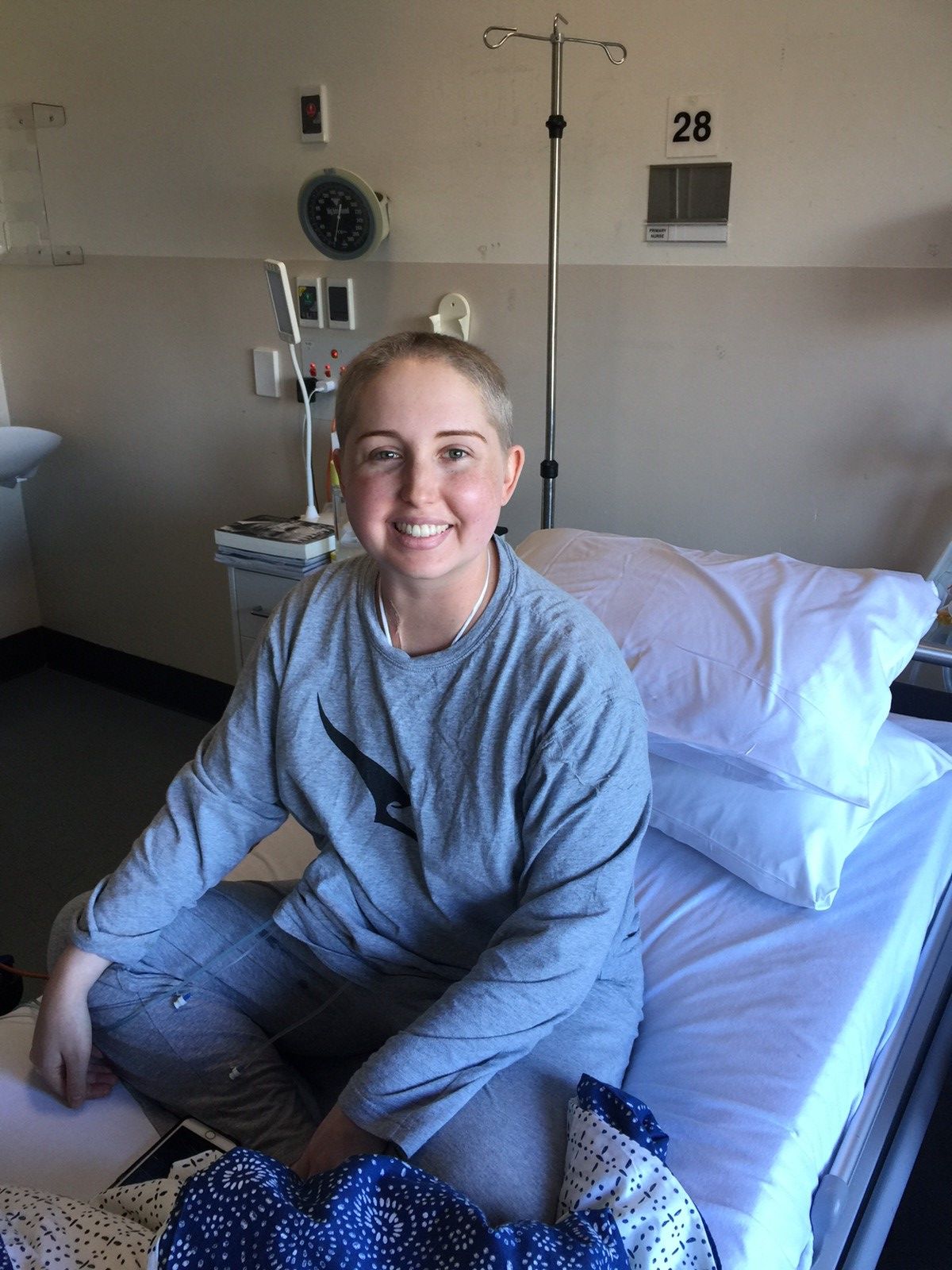
She went home for a week over Easter before having another intense round of chemotherapy, followed by oral maintenance chemo which she was able to have at home.
“I was getting ready to have my transplant,” she said.
The search for a matched unrelated stem cell donor
Brett is an only child and when she was diagnosed the search began for a matched unrelated donor.
“It was a pretty stressful time, being in limbo and trying to stay in remission while they found a donor,” said Brett.
At the end of April, Brett got “really good news” – a German donor had been found on the international bone marrow registry and her transplant was set for early-June.
Then, in mid-May she found out that donor wasn’t eligible to donate. Luckily, she had a second match, so the transplant was pushed back.
“It was stressful for my mum and dad as well. They had moved into an apartment next to the hospital, so were really close by,” said Brett.
“I waited six weeks to hear back about my other donor. I was told he was in the U.S. – Washington DC I believe, and that he was really young – 20, I think.
“It definitely put me at ease.”
Brett was “quite well” before her transplant.
“I was active, my hair was growing back and things were going well, so I really wanted to get it over and done with.”
Brett’s transplant was on 19 July 2018. She then had more chemotherapy to suppress her immune system, on Days 2, 4, 6, and 8, and had “fairly standard symptoms afterwards”.
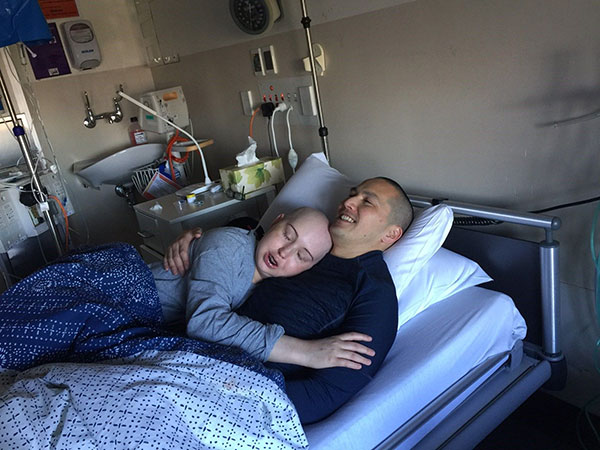
“I got really bad mouth sores… my mouth was pretty much a big blister. I was quite sick and wasn’t eating, so they put me on TPN food supplements.”
On Day 11, Brett’s cells grafted and she went home on Day 26 post-transplant, but only for one day.
She got graft versus host disease (GVHD) on her hands, which appeared as a “really bad rash”, so she went back to hospital for several days for treatment with high dose steroids. The rash went away after a few days and to counteract the GVHD, she continued the steroid treatment for five months.
“That was the only time I had GVHD. I was very lucky,” said Brett.
Fertility preservation to give Brett the potential to start a family in the future
Back in May 2018, while on maintenance chemo, Brett had one of her ovaries removed and frozen.
“This is a new type of fertility preservation, usually only for oncology patients,” she said.
“Because of the urgency with ALL to start treatment straight away, you don’t have an opportunity to harvest any eggs.
“In recent months I’ve been back to the IVF clinic, and in the future, once I’m ready to have kids, they’ll look at reinserting the tissues on my existing ovary.
“You can develop or regain some sort of ovarian function for a short period of time once they do that,” she explained.
“Going back to the fertility specialist was a bit confronting. I already knew I was infertile and going over it again I found quite upsetting, especially when people at work and your friends are getting married and having kids.
“It’s going to be a big effort to have kids in the future.”
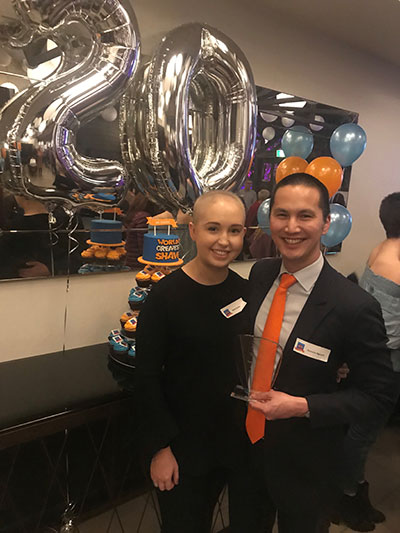
Brett’s slow return to her new normal
Brett describes her life now as “about 95% normal”.
“Things slowly go back to normal but unfortunately, it never goes back to normal 100%,” she said.
“In the middle of last year (2019) I found out the steroids had caused osteoporosis, which was a bit upsetting. I didn’t expect that to pop up in my 20s.
What has returned to normal for Brett is her day-to-day life, working and socialising.
“But things pop up and you realise you have been through something quite traumatic and you’re still processing that and the ramifications of the treatment as well.
“My hair’s still growing back, and I’ve put on a lot of weight because of the steroids. I never chose to look or feel different. It was never in my control. That’s hard for a young person in a world so caught up on appearance.”
A new appreciation of life’s fragility
Having faced the challenges of diagnosis and treatment, Brett is now more appreciative of how fragile life is and how difficult life can be for most people. Knowing now that life can quickly be taken away by no fault of her own, she ensures her choices made day-to-day and long-term align with the life she wants and what she wants to achieve.
“I don’t know what the future is going to hold for me,” said Brett.
“If I can do the right thing by eating well and exercising, then I put myself in the best position to face any future adversity because of my health.
“I really value the relationships I have and invest in every part of my life, rather than going through life on autopilot.”
While it took Brett “a good year” to get back on her feet, she was fit enough to return to work nine months after her transplant. An exercise physiologist helped her regain the muscle and general conditioning she had lost.
She’d been at ANZ for a month when she changed jobs after getting the dream job that she had envisioned for herself at university. She got a finance job in fashion and retail, at Country Road.
Brett and Ken live together now and “things are good”.
“We’re going back to the relationship we should have had in those early days, when life was a bit lighter.
“We’re doing fun things – weekend activities, going on holidays – that aren’t dictated by my health and we’re trying to live in the moment.
“In the last six months I’ve been happy in myself and well enough to go back to living life like I would have beforehand.”
And last Christmas, the couple went to New York for two weeks.
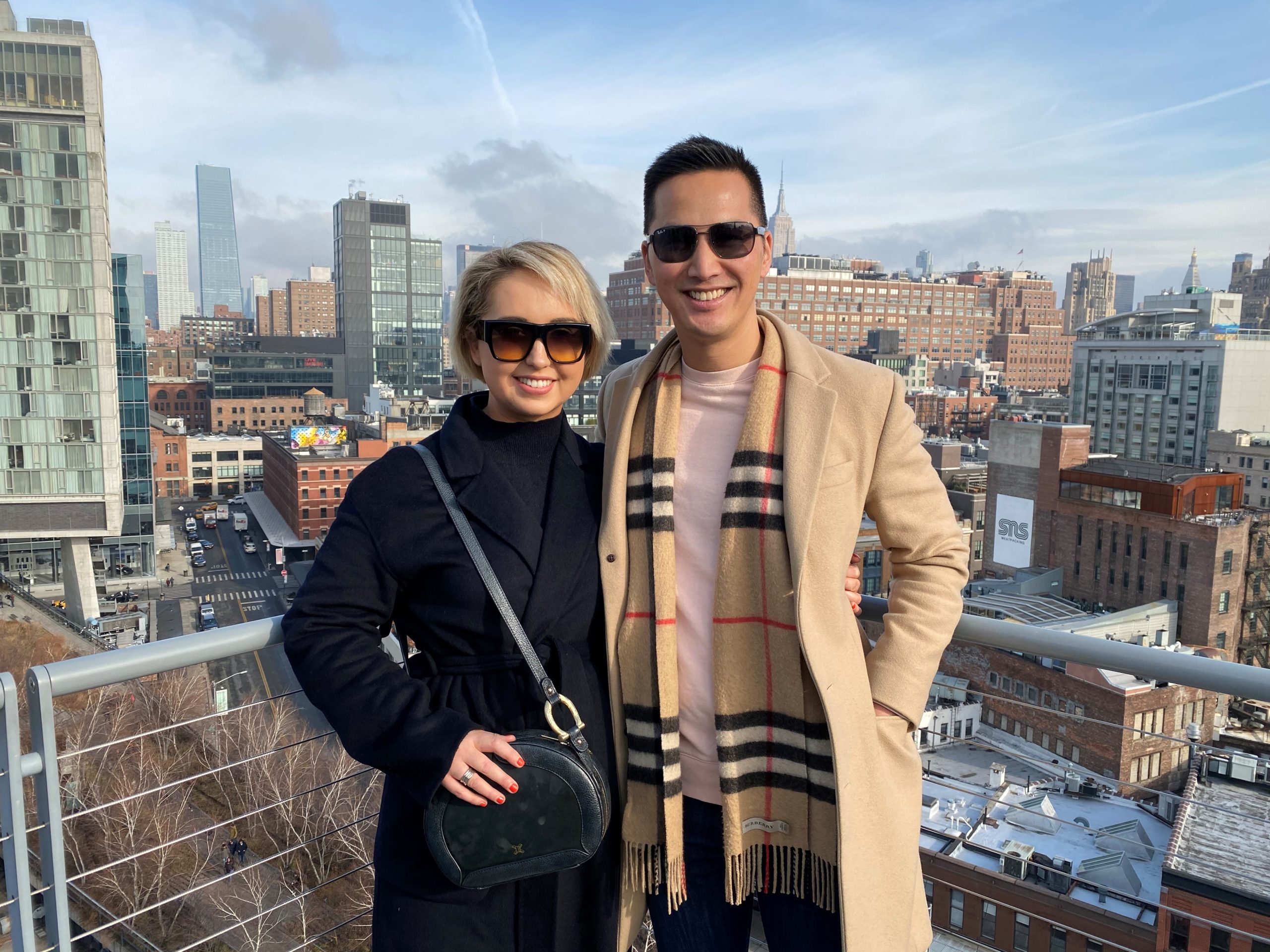
“It was the thing we talked about in hospital – that when I was well enough, we’d go to New York. It was a really big two weeks and I enjoyed every moment of it.”
Brett has corresponded with her bone marrow donor after receiving a letter from him in June 2019, which took five months to reach her!
“In the future it would be absolutely my dream to go and meet him and thank him for the selfless act that he did for me… giving life to a stranger across the world.”
Support from and support for the Leukaemia Foundation
The Leukaemia Foundation’s blood cancer support coordinators visited Brett twice a week while she was in hospital.
“They gave me really good, easy-to-understand, realistic answers to questions I had, such as – what does life look like after a transplant?
“Doctors say ‘you’ll be cured’ but that doesn’t mean anything. What’s your quality of life? Can I go back to work? Do people live after a transplant?
“There are some really easy questions to vocalise that are very difficult to answer,” said Brett.
Afterward the transplant Brett to workshops with her mum about getting back on your feet.
“Once I left hospital, it got pretty lonely. When you’re not going to work you don’t have anyone to talk to. It was nice to have those workshops to look forward to.
“And the Leukaemia Foundation recommended an oncology psychologist for young adults which was super helpful. I went to see her for a while.”
When Brett lost her hair, soon after her diagnosis, Ken shaved his head for World’s Greatest Shave in 2018.
“We initially thought we could raise $5,000 and we ended up raising $26,000,” said Brett.
“I was so proud. And it gave me something to think about other than being sick when I was in hospital… who we could ask for a donation.
“Ken got the award for second highest fundraiser in Victoria and we went to the awards night. It was just before my transplant and it was really nice to talk to other people there.”
And at last year’s Light the Night in October, Brett was the white lantern ambassador at the Federation Square event in Melbourne.
“That was a massive moment – it was just amazing. We were so happy for days afterwards.
“I’ll definitely be there every year, to just be with other people who have a connection to the disease. It was just a lovely experience,” said Brett.